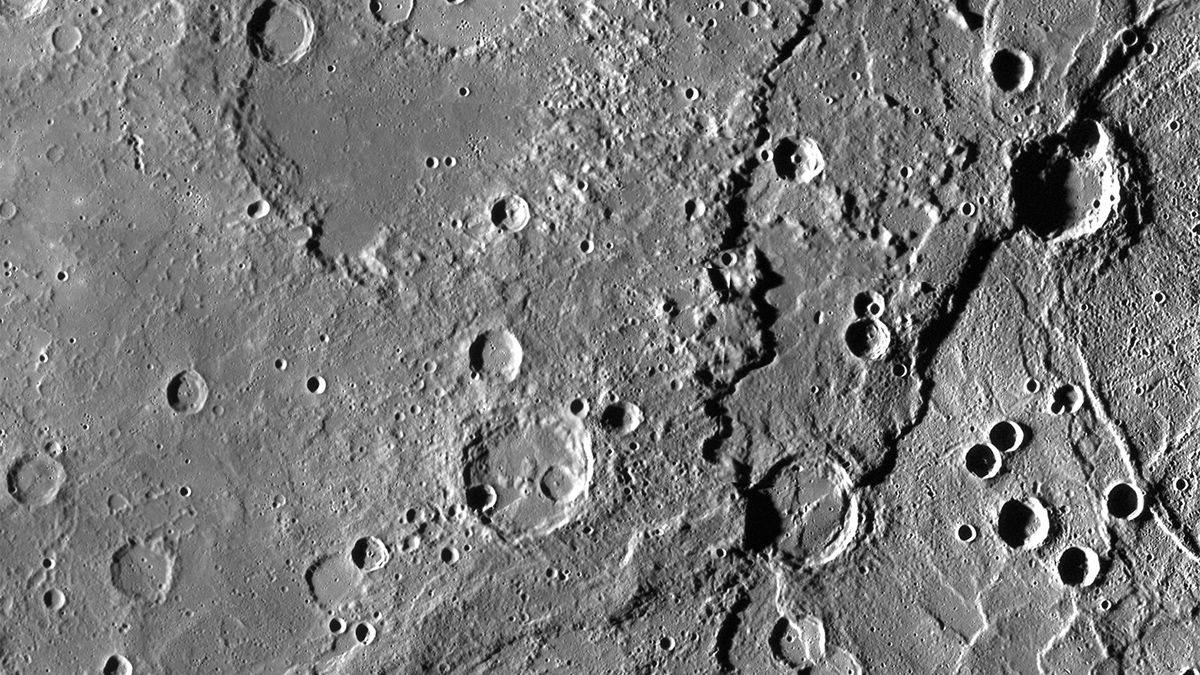How much has Mercury shrunk?
Mercury is still shrinking as it cools in the aftermath of its formation; new research narrows down estimates of just how much it has contracted.

What do many baked goods and the planet Mercury have in common? They shrink as they cool.
Evidence suggests that since it formed about 4.5 billion years ago, Mercury has continuously contracted as it has lost heat. And somewhat like a fresh-baked cookie or cheesecake, Mercury also cracks as it cools: Thrust faults cut through the planet’s rocky surface to accommodate the ongoing shrinking.
By observing how faults have uplifted parts of Mercury’s surface, researchers can begin to estimate how much Mercury has contracted since it formed. However, prior estimates have varied widely, suggesting that thanks to faulting resulting from cooling, Mercury’s radius has shrunk by anywhere from about 1 to 7 kilometers.
To resolve this discrepancy, Loveless and Klimczakemployed an alternative method for estimating shrinkage caused by cooling-induced faulting on Mercury.
Prior estimates all relied on a method that incorporates the length and vertical relief of uplifted landforms, but that produces different shrinkage estimates depending on the number of faults included in the dataset. In contrast, the new method’s calculations are not reliant upon the number of faults. Rather, it measures how much the largest fault in the dataset accommodates shrinkage, then scales that effect to estimate the total shrinkage.
The researchers used the new approach to analyze three different fault datasets: one including 5,934 faults, one including 653 faults, and one including just 100 faults. They found that no matter which dataset was used, their method estimated about 2 to 3.5 kilometers of shrinkage. Combining their results with prior estimates of additional shrinkage that may have been caused by cooling-induced processes other than faulting, the researchers concluded that since Mercury’s formation, the planet’s radius may have shrunk by a total of 2.7 to 5.6 kilometers.
The new estimates could help deepen the understanding of the long-term thermal history of Mercury. Meanwhile, the authors suggest, the same methodology could be used to investigate the tectonics of other planetary bodies, like Mars, that feature faults. This paper was published in AGU Advances.
Breaking space news, the latest updates on rocket launches, skywatching events and more!
This article was originally published in Eos. Read the article here.

Sarah Stanley, a freelance writer for Eos, has a background in environmental microbiology but covers a wide range of science stories for a variety of audiences. She has also written for PLOS, the University of Washington, Kaiser Permanente, Stanford Medicine, Gladstone Institutes, and Cancer Commons, a nonprofit that works with cancer patients.
You must confirm your public display name before commenting
Please logout and then login again, you will then be prompted to enter your display name.
